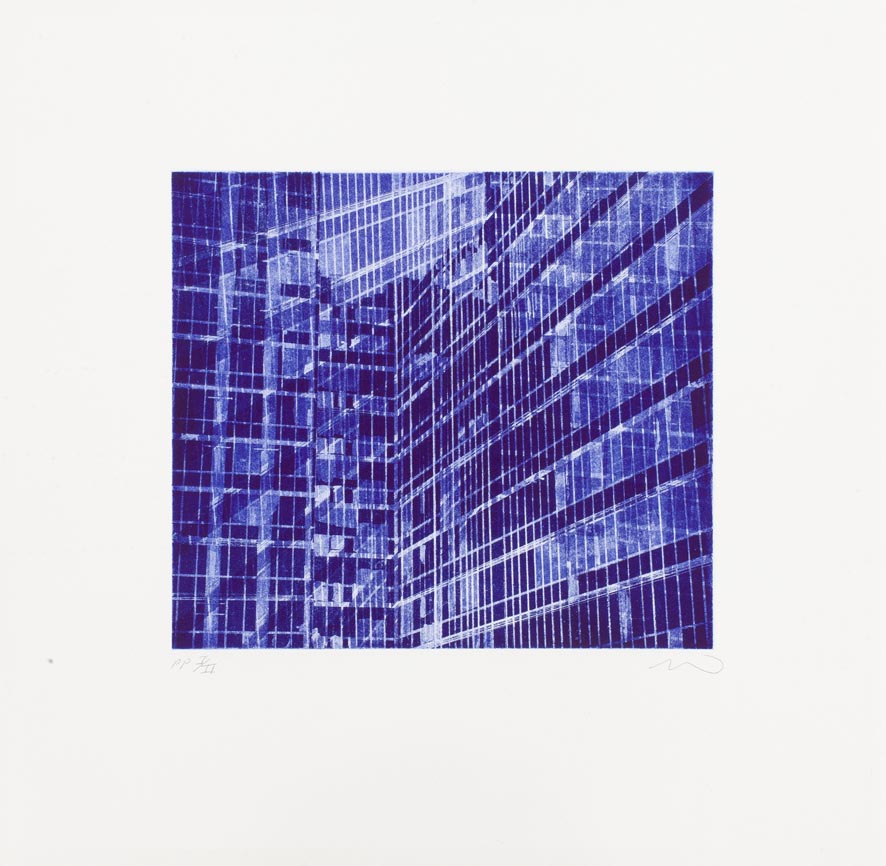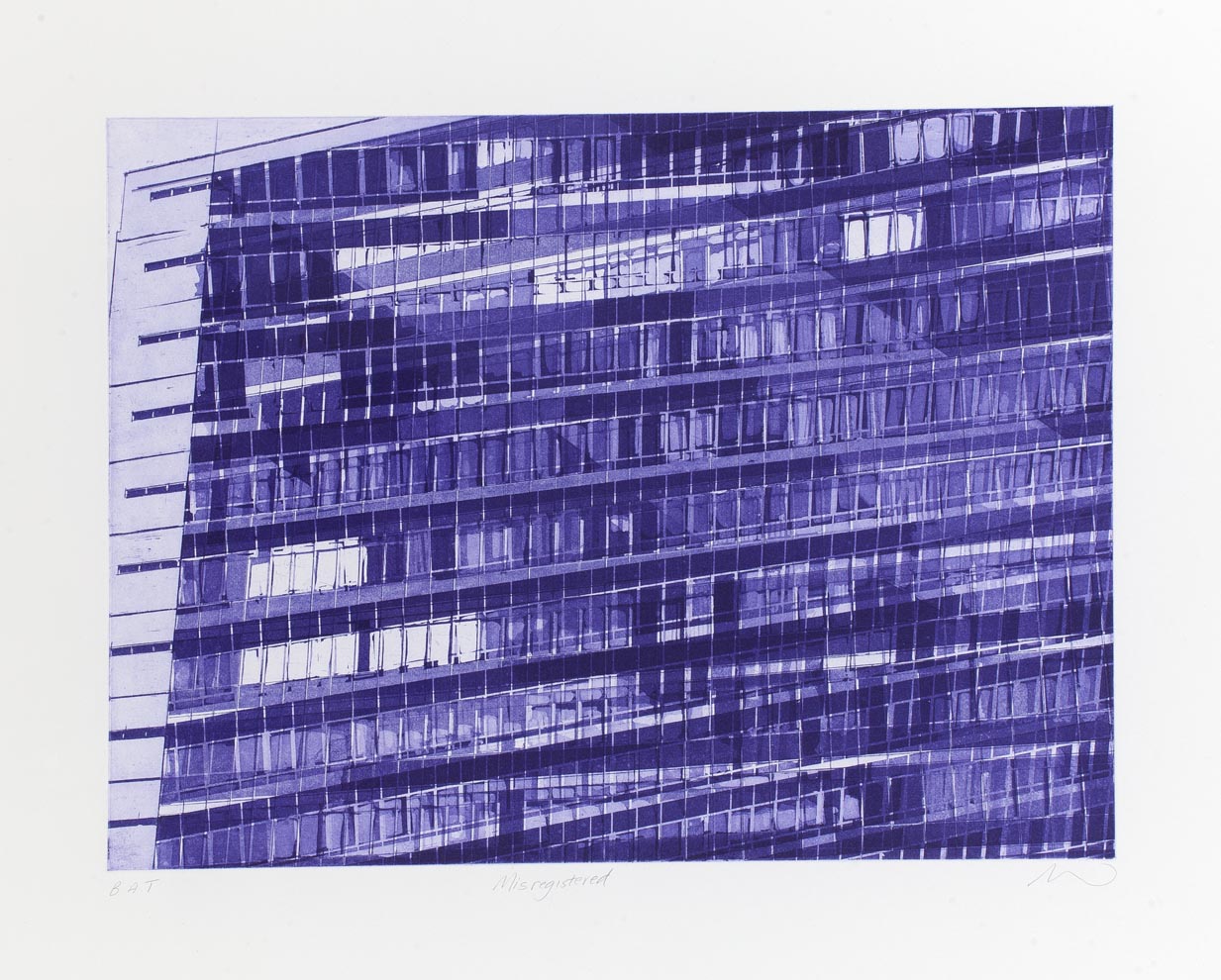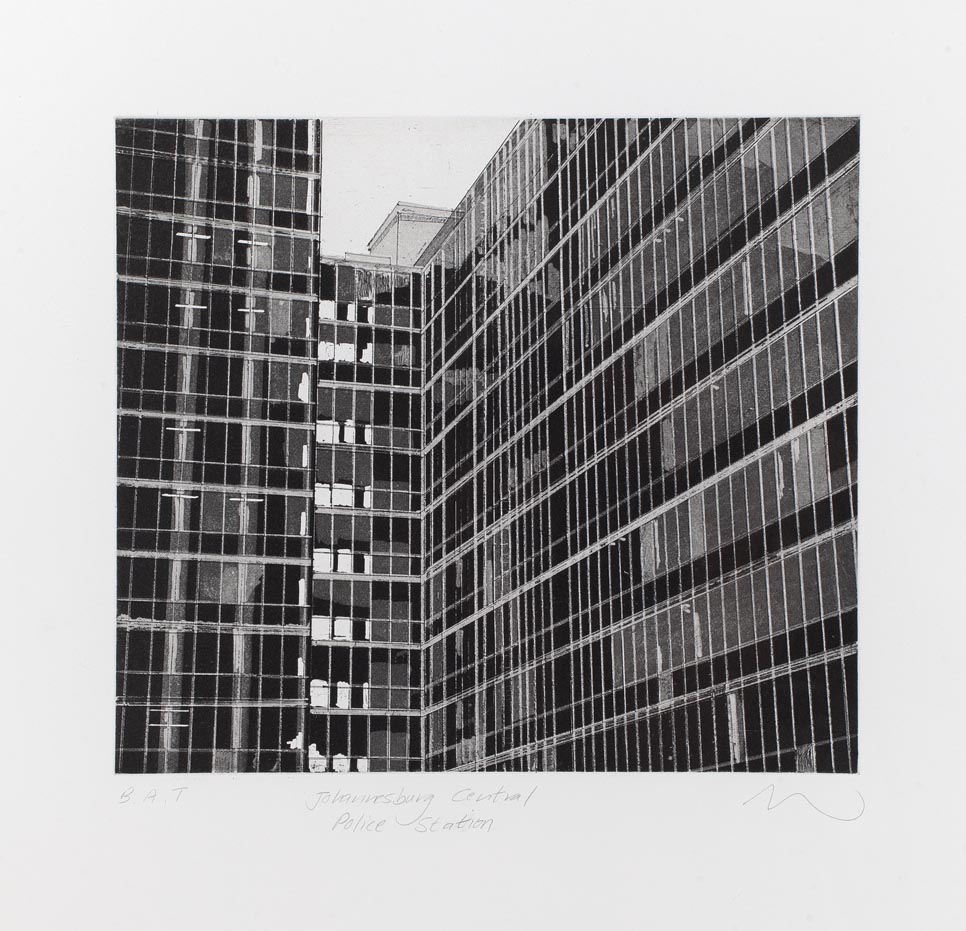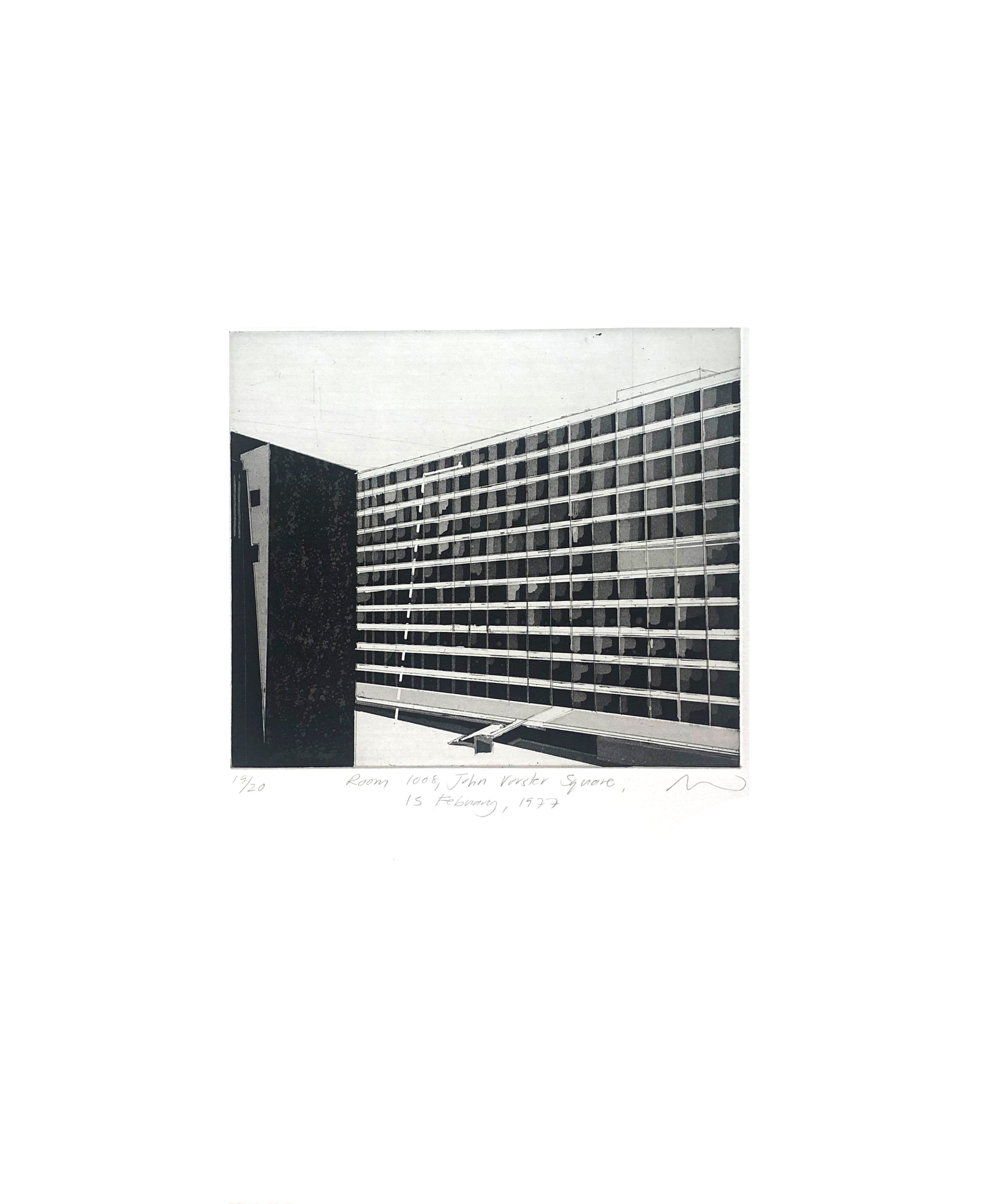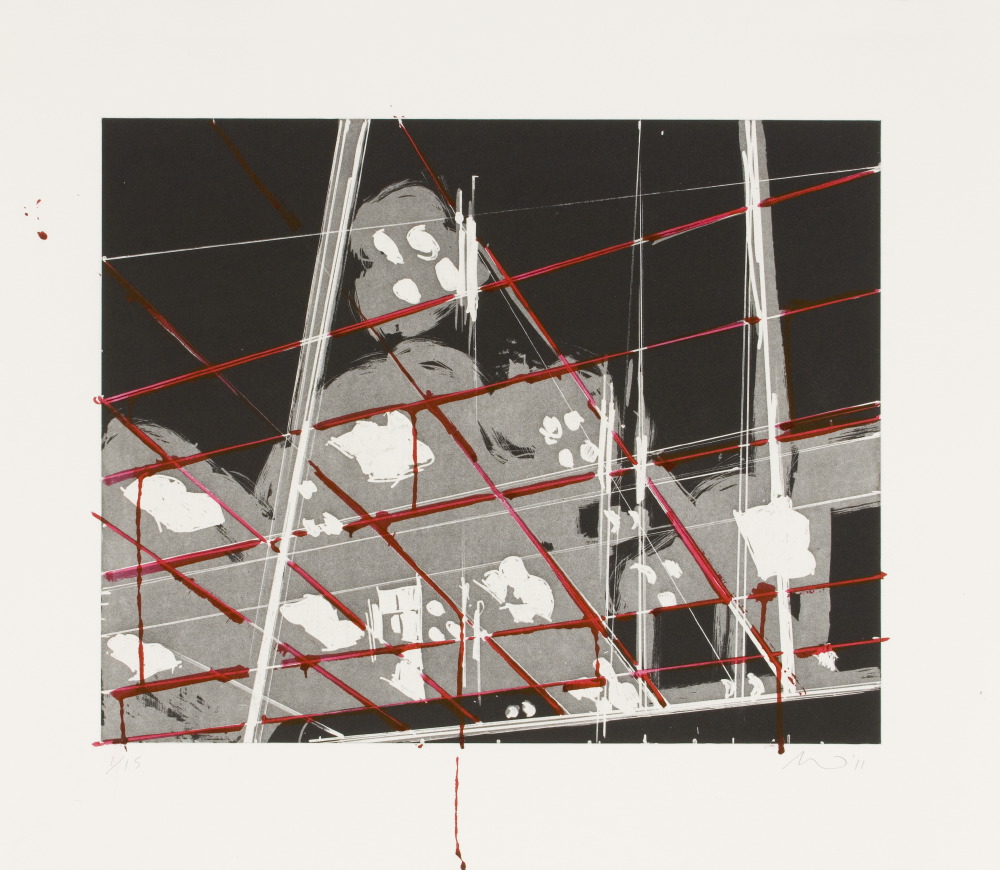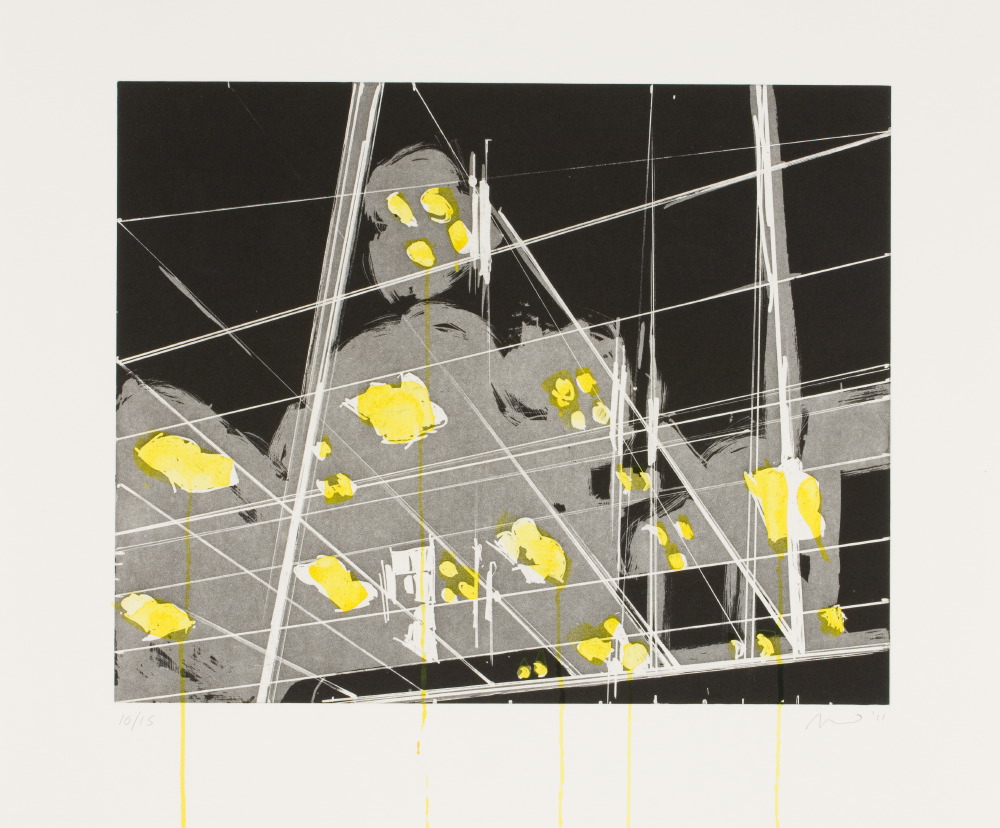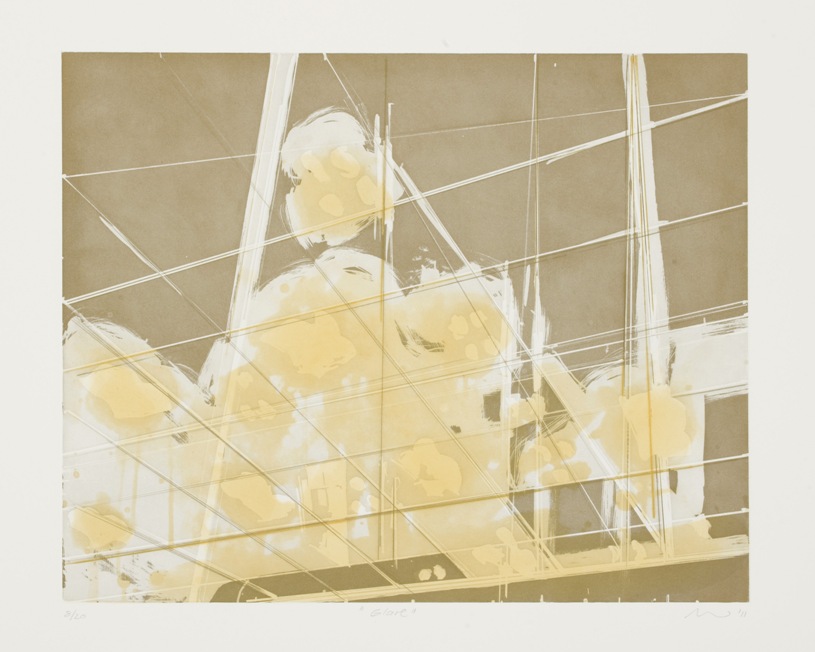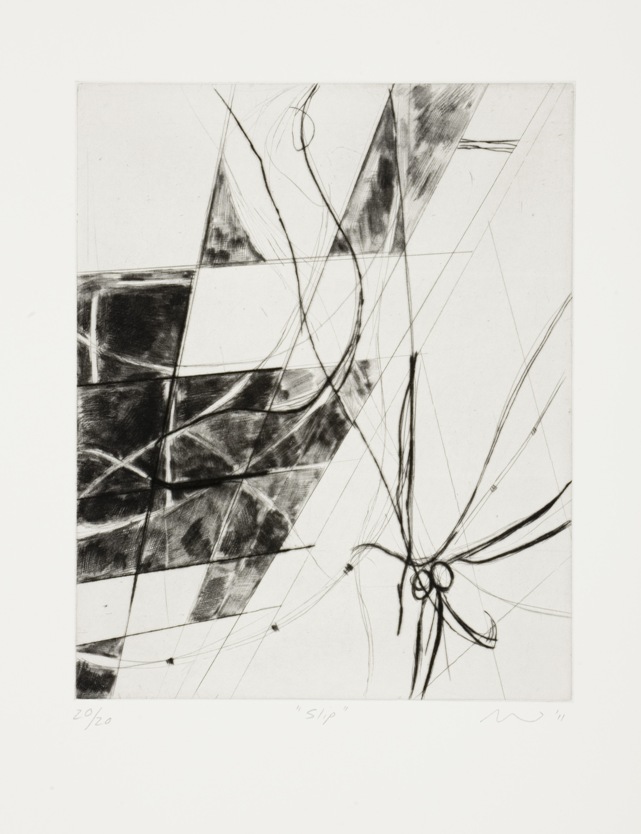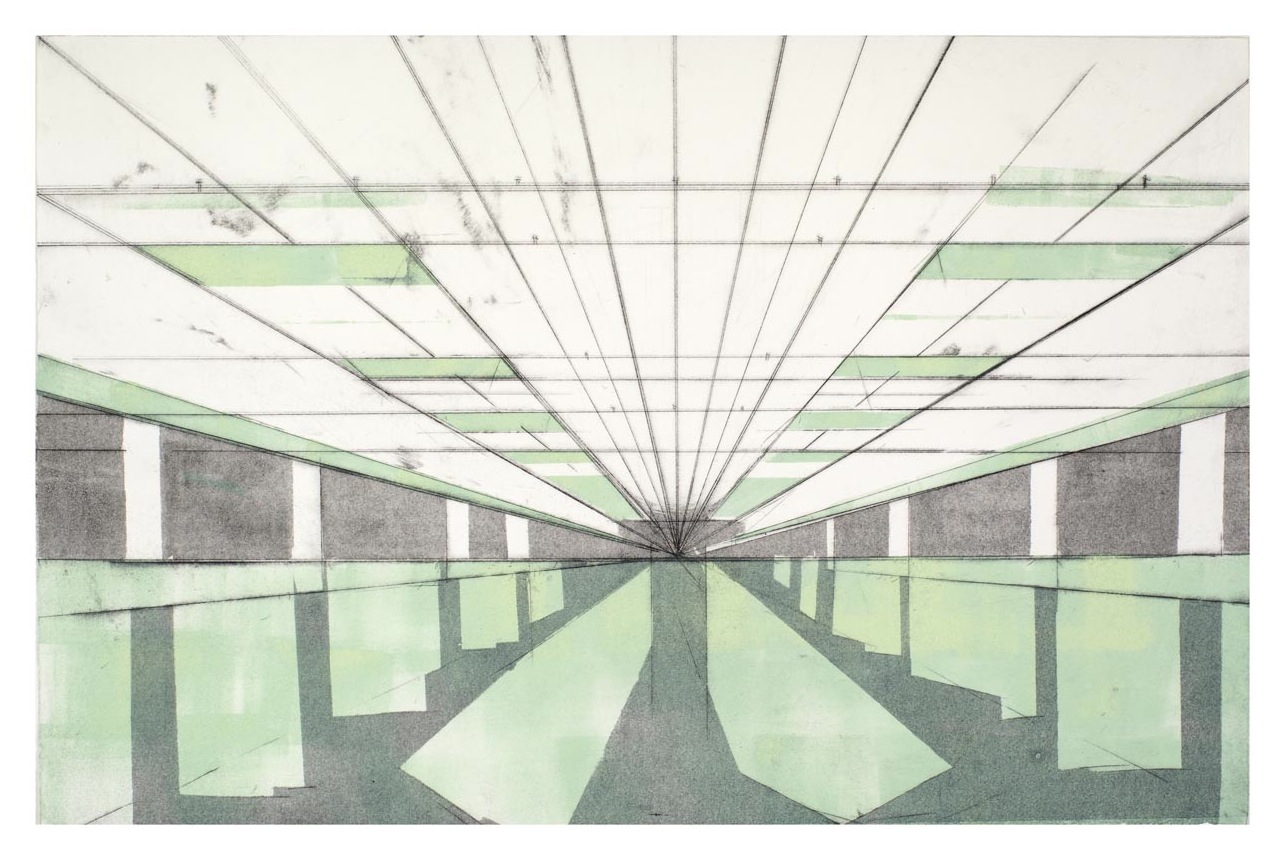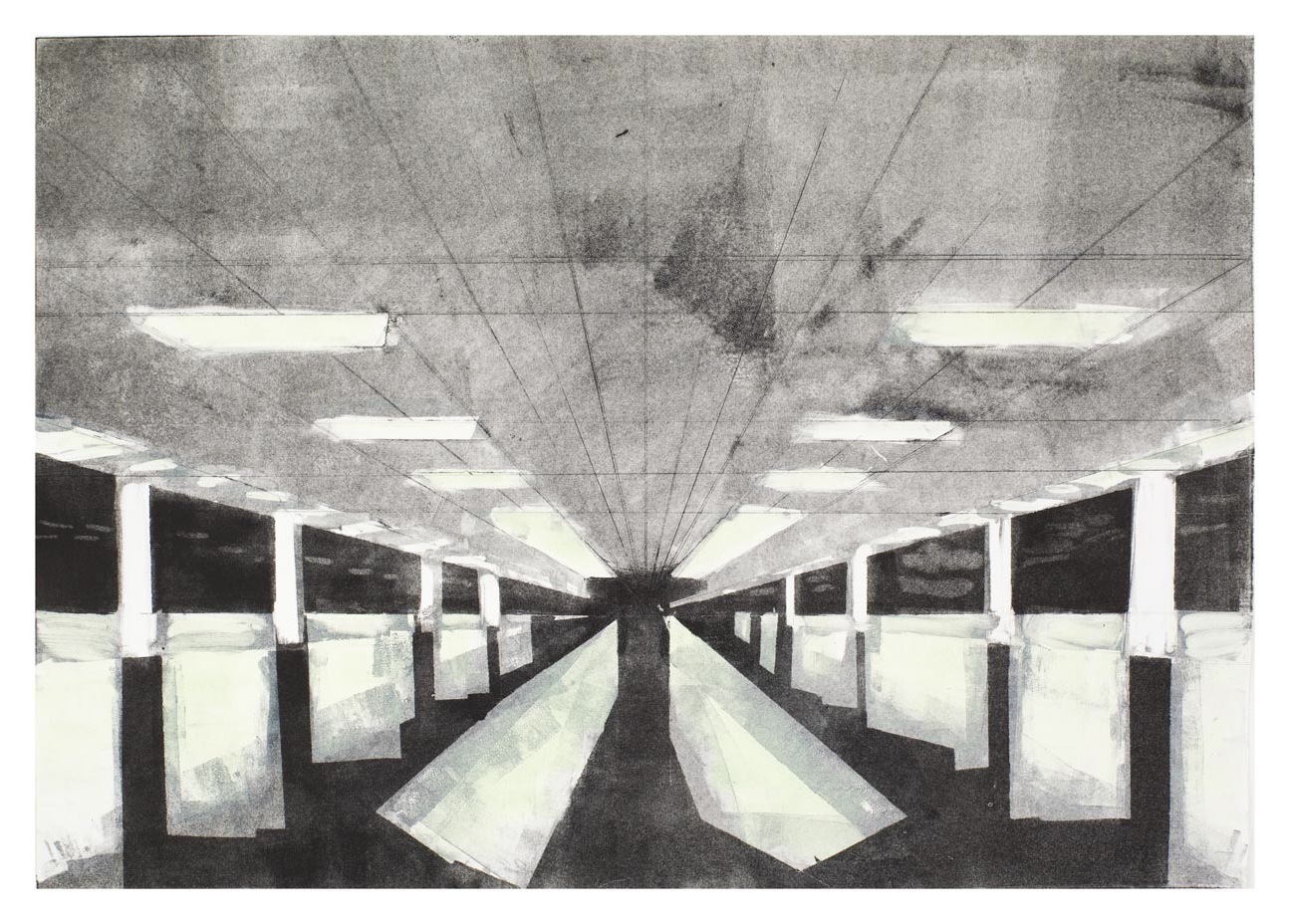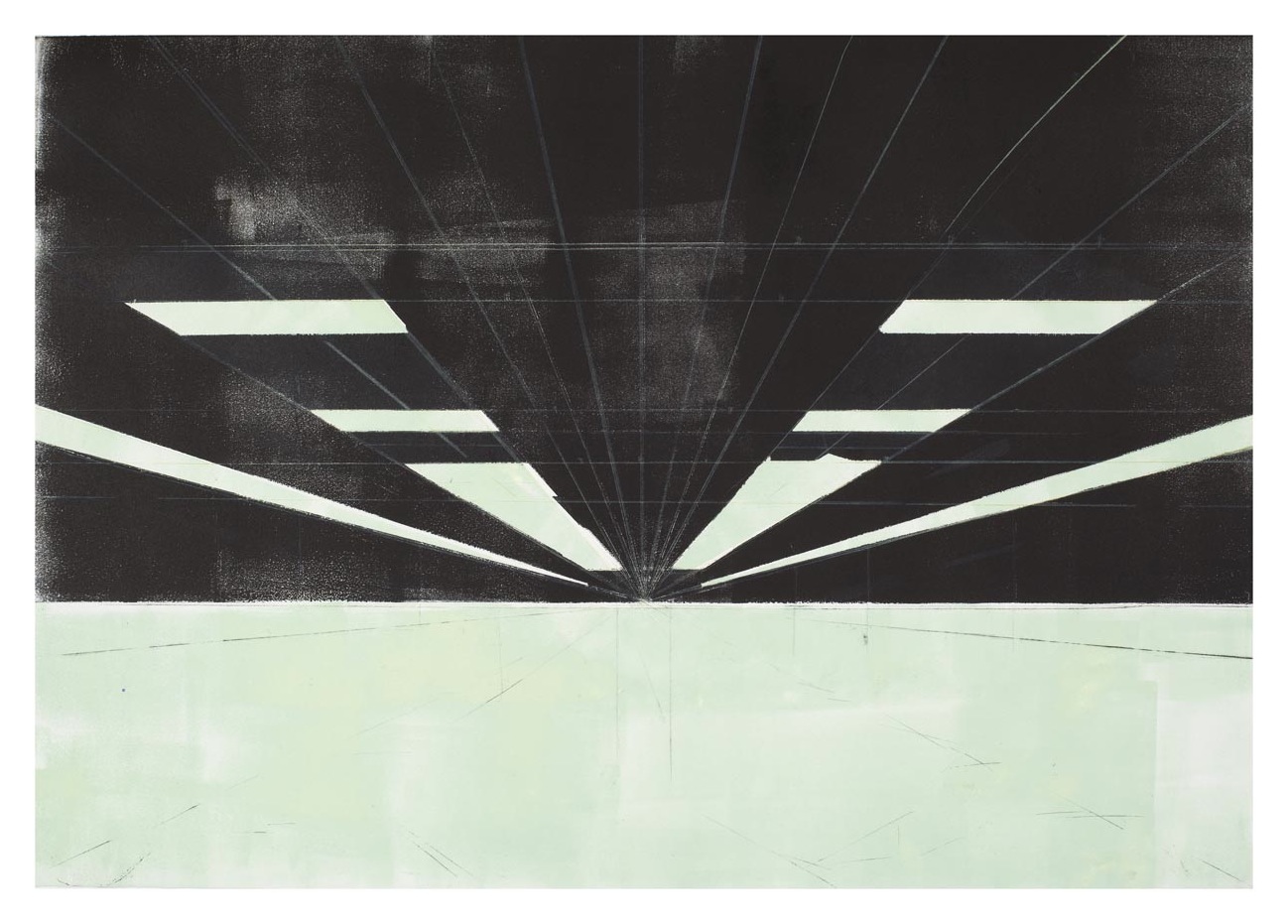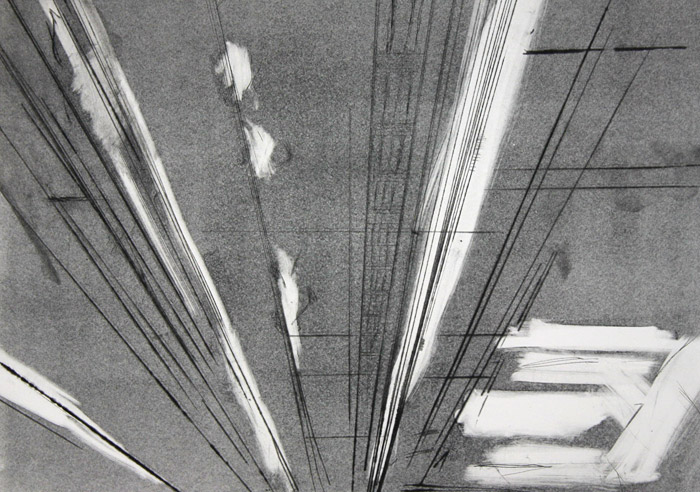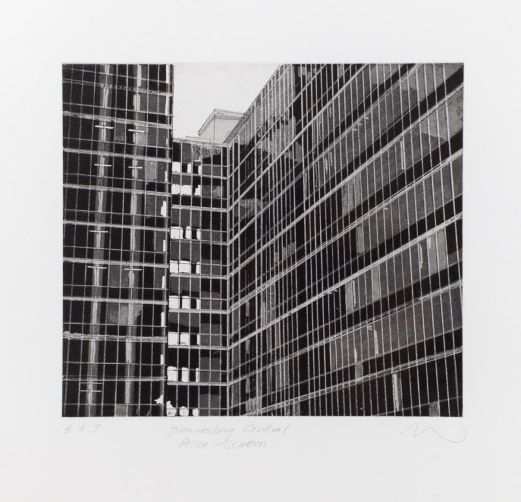
Mary Wafer
Mary Wafer has collaborated with David Krut Workshop (DKW) since 2005 with a focus on monotypes and etchings. In 2011, she returned to make a series of intaglio prints resulting in ensuing exhibitions at David Krut Projects (DKP) Johannesburg and Cape Town, entitled Countermeasures. In the same year, Wafer visited New York where she made 20 monotypes at Robert Blackburn Print Studio with master printer Phil Sanders.
In 2012, she again worked at DKW, this time collaborating not only with the printers but also with fellow artist Quinten Edward Williams. This work at DKW led to a solo show, called Mine, at DKP Johannesburg in2013, and a duo exhibition with Williams, aptly titled In Conversation.
In 2015, she had her third solo exhibition with DKP: Ninth Floor. It was the product of further collaboration between Wafer and the team at DKW.
Artworks
News
DKW’s Canadian intern Lacia Vogel
Jun. 1, 2018My passion for printmaking began in 2009. I was studying fine arts at UBC Okanagan in Kelowna, BC, Canada, and...
Tags: David Krut, David Krut Workshop, InternPrint of the Month (May 2018) Mary Wafer
May. 18, 2018This month's print of the month was chosen by our current intern Sarah Hunkin, a student at the Wits University....
Tags: Arts on Main, Collaborative printmaking, David Krut Print Workshop, David Krut Projects Arts on Main, DKW, etchingWhat’s new at DKW? A display of prints and paintings curated by our staff 2016-08
Aug. 8, 201608/08/16 Blogger: Jessie Cohen (JC) There is a new display of work on the walls at DKW - a combination...
Tags: David Krut Print Workshop, David Krut Projects Arts on MainIt’s “gym time” as work gets physically demanding but strong backs and weak minds won’t cut it at AOM…
Nov. 18, 201518.11.15 Blogger & photographer: Jessie Cohen At this time of year, printers at AOM are wrapping up projects from 2015....
Tags: Arts on Main, David Krut“In this profession, a millimetre matters”: Printing with precision at AOM
Nov. 13, 2015It’s another scorching day at AOM and printer Kim-Lee Loggenberg is in the workshop bright and early, ready to roll....
Tags: Arts on Main, David Krut Print WorkshopThis week at David Krut Workshop
Jul. 30, 2015The week at DKW has been effervescent. With new works being produced for multiple artist’s simultaneously. Stephen Hobbs has been...
Studio Visit with Mary Wafer
Jun. 18, 2015The DKP team recently paid a studio visit to artist Mary Wafer. Mary was kind enough to narrate the team...
Tags: studio visitMary Wafer Walkabout – Saturday 11 May
May. 8, 2013Please join us on Saturday 11 May at 11h00 when Mary Wafer will be hosting a walkabout through her exhibition,...
Tags: walkaboutThe Undertones of Marikana – Mary Wafer: “Mine” Exhibiton Review
May. 2, 2013By Bronwyn Law- Viljoen. Published in the Mail and Guardian, 26 April 2013. [caption id="attachment_25399" align="alignnone" width="640"] "Waiting" (2013)[/caption] No...
Tags: Exhibition reviewInstallation Images – In Conversation: Quinten Williams & Mary Wafer
Apr. 11, 2013In Conversation: Quinten Williams & Mary Wafer opened at David Krut Projects, Cape Town. Below are a series of installation...
Tags: Arts on Main, David Krut Print Workshop, David Krut Projects Cape Town, Parts & LabourMary Wafer and Quinten Williams at David Krut Print Workshop, Arts on Main
Nov. 22, 2012In preparation for her exhibition in early 2013 at David Krut Projects, Jan Smuts, Mary Wafer has begun working on...
Untitled: DKW Summer Show (5 November 2011 – 21 January 2012)
Nov. 1, 2011The David Krut Projects Summer Show for 2011 features artworks from a wide selection of artists, most of whom have...
Tags: David Krut Projects, Exhibition PostGuillotine by Lisa Jaffe: Official Launch 29 October 2011
Oct. 6, 2011Lisa Jaffe is proud to announce the official opening of...
Tags: 2011 Joburg Art Fair, 44 Stanley, Candice Wyatt, David Krut Workshop, Fashion, Jillian Ross, Joao Orecchia, Lisa Jaffe, Mary WaferDavid Krut Projects at Joburg Art Fair 2011
Sep. 17, 2011David Krut Projects will be showcasing work by Bruce Backhouse, Gail Behrmann, Deborah Bell, Bronwen Findlay, Claire Gavronsky, Joseph Hart, Stephen...
Tags: First Cut, Johannesburg Art Fair 2011Mary Wafer – Countermeasures exhibition opens at DK Projects Cape Town
Aug. 20, 2011Mary Wafer's solo exhibition "Countermeasures" will be opening at the Cape Town, Montebello Design Centre space, today. The exhibition, under...
Tags: Countermeasures, David Krut Projects Cape Town, Mary WaferIMPRINT: Selected Editions and Works on Paper, Installation Images
Jul. 20, 2011David Krut Projects is pleased to present IMPRINT, a selection of editions and works on paper by local and international...
Mary Wafer at Robert Blackburn Printmaking Workshop in NYC
May. 20, 2011Mary Wafer has recently returned from a trip to New York where, amongst many other things, she spent some time...
Tags: New York, Phil Sanders, Robert Blackburn Printmaking Workshop
